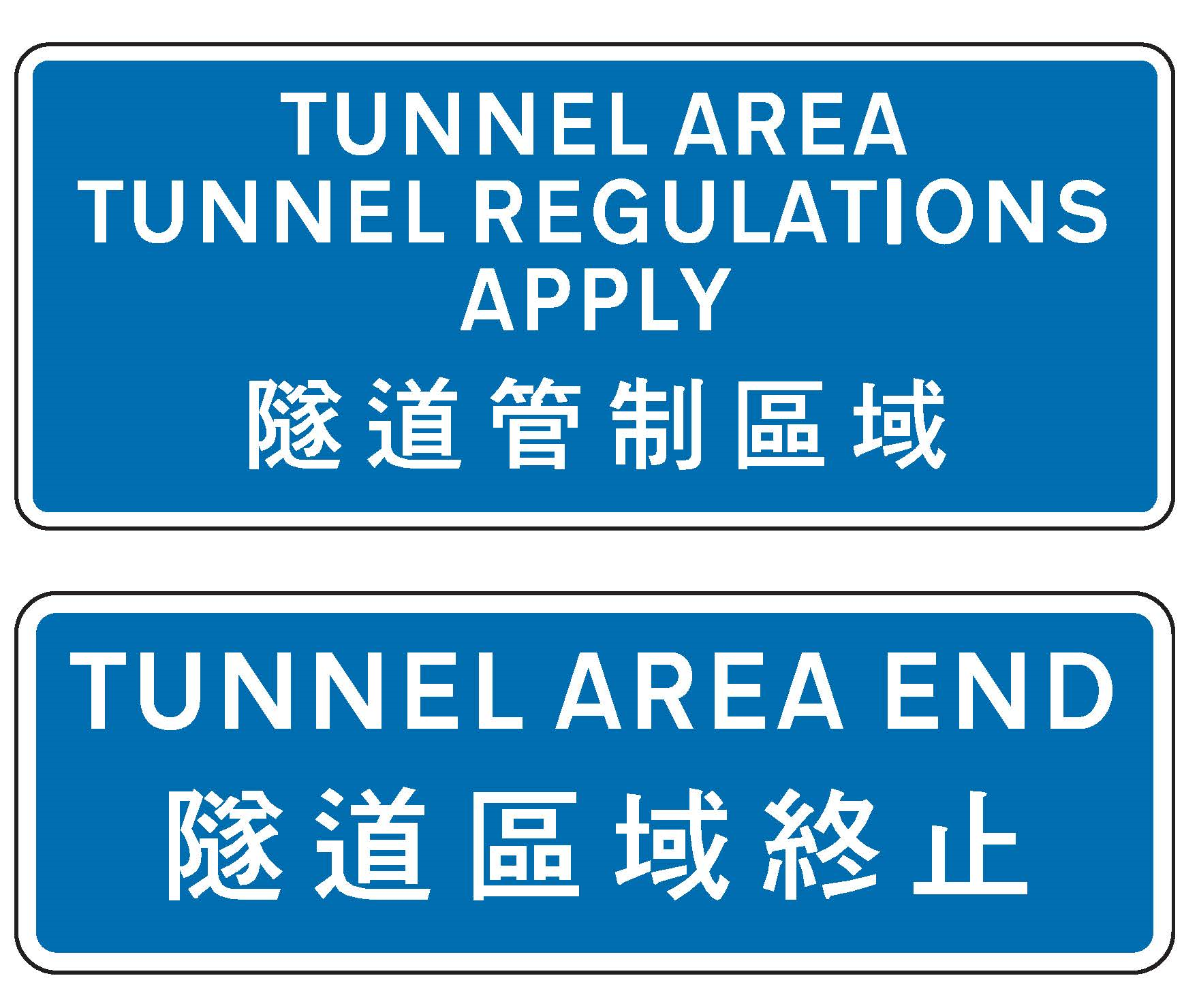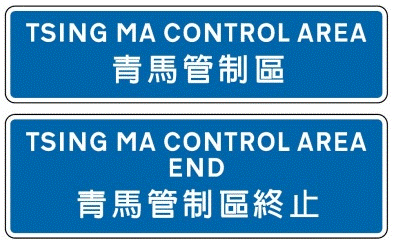
Tunnel areas

Tunnel users must follow the rules set out in the concerned tunnel ordinance(s), regulation(s) and bylaw(s) (refer to the relevant legislation on page 5). These rules apply to tunnel areas or tunnels, which generally include the tunnel tubes and the roads leading to or from the tunnel tubes. Traffic signs above mark the start and end of a tunnel area.
You must obey all signals and directions given by police officers or tunnel officers.
Where there are two or more lanes open to traffic through a tunnel, select the appropriate lane you wish to approach and use in the tunnel. Keep in lane through the tunnel, and do not cross any 'Double white' lines, even if your lane is temporarily blocked.
In gernal, all tunnels have two tubes, one for each direction of travel. Under normal conditions the tubes are one-way roads, the same as a dual carriageway. However, if one tube is closed such as during maintenance at night, the other open tube may implement two-way operation and special traffic arrangement and temporary signs will be used to guide you. You must not overtake or drive in the right most lane since in such circumstances it would be the oncoming lane.
Be prepared for any diversions and the unexpected.
|
In a tunnel, you must not
No vehicles carrying specified dangerous goods |
Emergencies and breakdowns If your vehicle breaks down or you are involved in a traffic accident inside a tunnel, stop and do not move your vehicle. Refer to information and advice in Chapter 10 (page 133). |
Autotoll
![]()
'Autotoll lane' guide mark

'Autotoll lane' sign displayed on top of a traffic lane with autotoll booth.
'Autotoll lane' guide marks are painted at regular intervals along traffic lanes leading to autotoll booths. Only vehicles with valid tag may use autotoll lanes.
Control Areas
When you enter a control area (for example, Tsing Ma Control Area or Tsing Sha Control Area), you must follow the rules set out in the concerned control area ordinance(s), regulation(s) and bylaw(s) (refer to the relevant legislation on page 5) and the instructions given by authorised personnel in such area. Signs below show the start and end of a control area.
